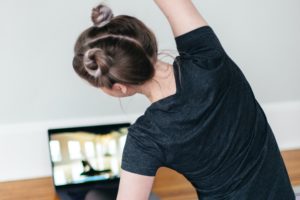In our last article, our readers had a thorough introduction to the ACL. People that endure ACL injuries know how painful this injury is, so we want to share how you can prevent this injury and other injuries alike. Continue reading our part two of this series, and learn about risk factors and ACL injury prevention.
Risk factors:
Like any sort of injury, there are risk factors. People that play any sort of physically demanding sports such as football, softball, soccer, or volleyball, are at risk for an ACL injury. For starters, being female is a risk factor.
This may be possibly due to the difference in anatomy. Muscle strength, composition, and hormonal influence may be the cause of females being at risk. Poor conditioning is also a risk factor.
For those exercising at home during quarantine without any professional guidance and feedback, this presents the possibility of an ACL injury. Similarly, anyone that is out of shape and is trying to get in shape, take it easy.
Start from the bottom:
 Work your way up. If you are out of shape or not well-conditioned, you are at risk for any injury. Take your time and work from the ground up.
Work your way up. If you are out of shape or not well-conditioned, you are at risk for any injury. Take your time and work from the ground up.
Begin with stretching and light weights. Wake up the muscles that have not been challenged in a while by guiding them with beginner exercises. Beginner yoga is a great place to begin online.
Anyone that is not in great physical shape can begin with basic stretching, yoga, and pilates maneuvers. Do not begin with quick, fast jerking motion exercises that put people at higher risk for injuries. For example, on the first day of working out after being out of the game a while, start out with a thirty minute walk outside to warm up the muscles.
Next, stretch outside, in the heat or a warm room, while your muscles are still warmed up. Lastly, follow credible trainers for proper stretches. Alternatively, make an appointment with our professionals to learn how to properly strengthen your body.
Other risk factors:
 Gear and attire are always important. You wouldn’t advise someone to swim in heavy combat boots, baggy jeans, and a puffer jacket right? Make sure to dress sufficiently for any activity.
Gear and attire are always important. You wouldn’t advise someone to swim in heavy combat boots, baggy jeans, and a puffer jacket right? Make sure to dress sufficiently for any activity.
For starters, always wear well-fitted shoes. When people do not wear proper fitting footwear, it puts them at risk for an ACL injury. Avoid using poorly maintained sports equipment.
When skiing or snowboarding, make sure the bindings are adjusted properly. If not, you will feel pain in your knees or ankles. If you fall with bindings the aren’t correctly positioned, you are at high risk for an ACL injury.
Lastly, we will share that playing on artificial turfs have proven to put participants at risk for ACL injuries. While they are installed to create a clean, modern look and function, artificial turfs come with risks. Be careful of playing on such surfaces if you have a history of ACL injuries.
Come back again next time as we share prevention!



